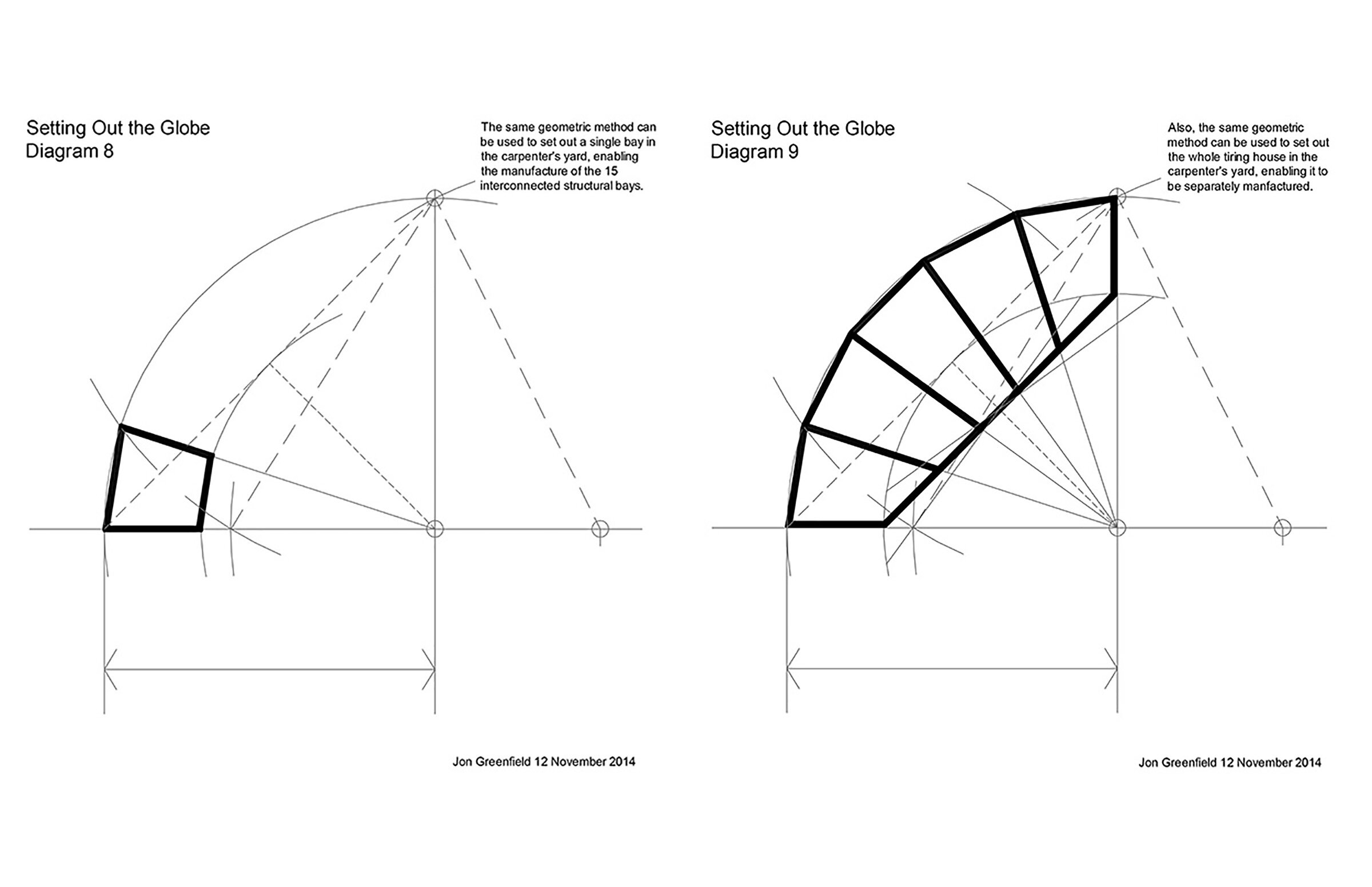
Sacred and Practical Geometry
One of many aspects the Globe Theatre research carried out by Greenfield concerned setting-out geometry. Unable to rely on modern tools for simple measurements and producing true right angles, geometry had great practical value in the sixteenth century. Triangulation of string lines and other geometric techniques could produce polygonal figures with great accuracy, and the techniques could be adapted for both the site and workshop so that the pre-fabricated items (timber frames) would fit perfectly with elements constructed on site.
Early research looked at the Rose Theatre, investigating how the unusual ground plan - unusual in being a fourteen sided polygon - might have been drawn out using contemporary knowledge of geometry. This video has been developed from an illustrated talk and demonstrates the manipulation of a compass that produces a convincing plan of the Rose Theatre.
Progressing from the ideas explored in the video concerning the Rose Theatre, the method illustrated below shows how the whole of the Globe Theatre can be set-out using just one measured dimension and geometry. Albrecht Dürer published geometric methods for setting out polygonal shapes in 1515 and Serlio, as part of his five books, in 1545. Methods explained in both have been used here.


